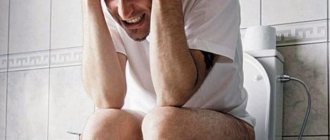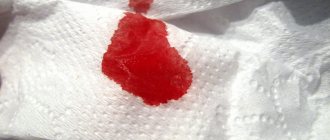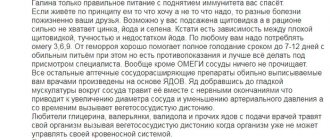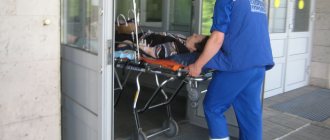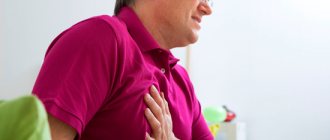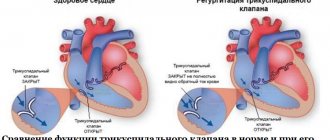Why can hemorrhoids occur when working in an office?
With sedentary work or a sedentary lifestyle, blood circulation in the lower body is disrupted. Redistribution and stagnation of venous blood in the pelvic area and lower extremities, difficulty in its outflow lead to dilation of the veins, including in the anus, as well as to the proliferation of cavernous tissue of the rectum. This is how hemorrhoids are formed. The disease can be asymptomatic for a long time; the developing thickening of the veins is noticeable only to a proctologist during a digital examination.1,2
Workouts at home and at work
To warm up your muscles for a short time, you don’t need to get up and go somewhere. It is enough to start by relaxing and squeezing the muscles of the anus - 10-15 minutes each. Do 30 exercises in one approach, then their number is increased up to a hundred times.
Light exercise not only activates blood circulation, but helps to distract and relieve emotional stress. In the office, you can use a stripped-down Kegel technique aimed at preventing weakening of the pelvic muscular system. Using the complex:
- blood circulation improves;
- the muscles responsible for supporting the rectum are activated.
The point of the exercise is to squeeze the gluteal muscles, simulating an attempt to rise above the chair. Having reached maximum tension, spend 3 seconds in this state, then relax. The number of repetitions is up to 15 times, 50 approaches are performed per day.
Spending a long time at the monitor requires blood to flow out of the pelvic area. Simple but effective measures to solve the problem include:
- evening walks - several stops on foot along with a bus ride;
- long visit to the park on a weekend;
- daily morning exercises and light training in the evening (with scissors, bicycle, etc.).
During your vacation, you need to walk more, climb stairs (ignore the elevator), and swim in the pool. Weight control is no less important - every extra kilogram creates additional stress on the blood vessels, increasing the risk of reducing their functionality and the subsequent development of various diseases.
Exercises to prevent hemorrhoids during sedentary work
A special preventive complex has been developed to prevent blood stagnation during sedentary work. It includes several exercises:
Stand up and cross your legs. Then rhythmically tense the muscles of the buttocks and rectum. Repeat 3-6 times.
Sit on a chair with a hard seat, tilt your back slightly forward. Squeeze your rectal muscles 3 to 10 times.
Half bridge Lying on your back, arms along your body, lift your pelvis up. The upper back and feet remain pressed to the floor.
Lying on your back, lift your straight legs up one at a time up to 10 times each.
Lying on your back, spread your legs raised and extended forward to the sides and bring them back for 30-60 seconds.
Imitate riding a bicycle with your legs while lying down for 30 to 60 seconds.
Lying on your back, press your legs bent at the knees to your chest 10-12 times.
Get into a position that rests on your knees, elbows and palms. Lower your pelvis sideways to the left and then to the right, trying to touch the floor with your buttocks. Repeat 6-8 times on each side.3
The first two exercises can be performed in the workplace without anyone noticing.
Professions affected by the disease
Hemorrhoids from sedentary work develop in people who spend a lot of time at computers: programmers, engineers, teachers, office workers. It often appears in truck drivers who are forced to remain behind the wheel for 8-12 hours at a time.
The risk group also includes people with a hereditary predisposition to developing the disease. If close relatives of a person had varicose hemorrhoidal veins, he should avoid prolonged stays in a stationary position and pay attention to the prevention of the disease.
Phlebaven® for hemorrhoids
The flavonoids hesperidin and diosmin, obtained from plants, have shown good results in the non-surgical treatment of hemorrhoids. They increase the tone of the veins, improve microcirculation, and prevent exacerbation of the disease.4
According to the instructions, the drug Flebaven® is used in the treatment of acute hemorrhoids. The dosage and need for use in a particular patient is determined by the attending physician.5
References 1. Karpukhin O.Yu., Modern methods of treating hemorrhoids, Practical Medicine, 2003. 2. Rivkin V.L., Outpatient treatment of hemorrhoids, Hospital-replacing technologies: outpatient surgery, 2014. 3. Association of General Practitioners of the Russian Federation, Clinical guidelines for general practitioners (family doctors): hemorrhoids, 2014. 4. K.E. Mayat, Modern methods of treating hemorrhoids, Attending physician, No. 3, 2008. 5. Instructions for the drug Flebaven®.
Created by experts commissioned by KRKA PHARMA LLC
What are the symptoms of driver's hemorrhoids?
If a driver is suspected of having hemorrhoids, his symptoms, in fact, will not differ much from the classical course. The main complaints among men are painful itching in the anus and perineum, which is formed as a result of the leakage of mucus and irritation of the skin. Hemorrhoids also cause painful symptoms - they are localized inside the rectum or in the anus; a pulling and pressing sensation may occur inside the perineum, especially intensifying after a working day. If this is an exacerbation of hemorrhoids, the symptoms are supplemented by general malaise, bleeding, fever and even thrombosis. However, the difference between driver’s hemorrhoids is the fact that all manifestations can be more pronounced than in other men. This is largely due to the fact that even in the presence of primary symptoms of hemorrhoids and malaise, they are forced to work and lead their usual lifestyle (completely unsuitable for hemorrhoids), which aggravates the manifestations of the disease.
This includes dry food, which is almost always formed on long trips, and where there is no access to healthy dietary food. This is sitting for a long time when you need to move. The driver needs to steer, he needs to carry out the plan, and this means sitting behind the wheel for many hours. Of course, you should under no circumstances ignore the first warning signs; this can only worsen your condition and completely deprive yourself of your ability to work due to complications. Sometimes drivers get their hemorrhoids so bad that the only treatment option for them is surgery and a long period of rehabilitation.
Which seat will be the best?
To reduce pain when sitting, you will need a suitable pillow. How to understand which seat is the most comfortable and will help you feel comfortable longer? A new pillow under the buttocks should ensure an even distribution of body weight on the tissue of the buttocks so that the area of projection of the hemorrhoids is suspended.
By avoiding squeezing the anus, it will be possible to eliminate the causes of discomfort, namely physical pressure on the nodes and excessive filling of the pelvic organs with venous blood. To do this, you need to have a small hole or hole in the middle of the chair.
Special inflatable pillows are available to patients, which help even with advanced forms of the disease.
There are seats with special pimples; they massage deep muscle fibers, thereby stimulating the flow of blood from this area, which helps reduce pressure on the walls of hemorrhoids from the inside and, accordingly, reduces pain.
There are donut-shaped inflatable pillows; the projection area of the anus is placed in the center above the hole, thereby distributing the weight to other areas of the buttocks. There are seats consisting of two cushions arranged in parallel and connected in the middle by jumpers. Thus, there is a large cutout in the center to relieve pressure on swollen hemorrhoids.
Causes of pain
Many patients note that the first manifestations of pain in the anus developed during prolonged sitting. With chronic hemorrhoids, people claim that at rest, pain develops only when sitting in one place for more than ten to twenty minutes.
What is the reason for the increased discomfort during inflammation of the hemorrhoids while sitting? The occurrence of pain always indicates a change in the condition of one or another organ. Transferring the body to a sitting position leads to an increase in intra-abdominal pressure, as visceral fatty tissue, abdominal organs and subcutaneous fat put pressure on the pelvic organs.
The resulting venous congestion leads to stretching of enlarged hemorrhoids, which causes the person to feel pain. In addition, when sitting still, the fulcrum is on the buttocks. Tense muscles and fatty tissue in this area put pressure on the inflamed nodes, which irritates pain receptors.
The combination of increased blood supply and mechanical compression from the outside leads to severe pain. Most people note that sometimes they have to work standing, placing pillows under their buttocks or, conversely, sitting at the edge of a chair. Discomfort brings many difficulties into a person’s life, so it needs to be dealt with.
There are several ways to get rid of pain:
- using drug therapy;
- choosing a comfortable seat;
- by surgically removing hemorrhoids.
The most effective conservative tactic for getting rid of pain when sitting is to combine drug therapy with the selection of the most comfortable sitting.
What is hemorrhoid surgery?
There are four stages of disease development:
- First stage. Characterized by bulging nodes and periodic bleeding.
- Second stage. The nodes increase, prolapses are added, but the nodes can be straightened yourself.
- Third stage. The nodes increase in size, prolapses are added, but the nodes can no longer be straightened on their own.
- Fourth stage. Constant loss of bleeding nodes.
In the initial stages of hemorrhoids, when the hemorrhoids are not very pronounced and do not cause significant discomfort, conservative treatment using tablets, rectal suppositories, and ointments is possible. In most cases, this method of treating nodes does not get rid of the root cause of the disease. For this reason, surgery is recommended for hemorrhoids.
Surgeons at our coloproctology department at the clinic of the Federal Scientific and Clinical Center of the Federal Medical and Biological Agency in Moscow use innovative, minimally invasive techniques when removing hemorrhoids. These methods are:
1. Infrared photocoagulation. This is a type of laser surgery, during which the leg of the node is cauterized. The high temperature of the laser radiation “evaporates” the tissue of the node, thereby eliminating the root cause of hemorrhoids - dilated veins. Our clinic uses equipment from the American company Reedfeed. The effectiveness of this technique in the treatment of hemorrhoids at an early stage is almost 80%, which is a very good result.
2. Sclerotherapy. This technology involves the introduction of a special sclerosant substance into the hemorrhoid. Due to their special chemical properties, these substances, when introduced into a node, cause collapse of blood vessels (veins) and their sclerosis (overgrowth), which is accompanied by a decrease in the volume of the node and prevents them from becoming inflamed in the future. The effectiveness of this technique is about 85%, with its help you can get rid of a maximum of 2 nodes at once.
3. Ligation with latex rings. With this method, a latex ring is placed on the stem of the hemorrhoid, which prevents blood circulation. As a result of a disturbance in the blood supply, a gradual death and subsequent removal of the weakened node occurs - after 1.5-2 weeks it disappears on its own, and in its place a small stump remains, which does not cause any discomfort to the patient. Our clinic uses latex rings and equipment for applying them from Kare Storze. The effectiveness of this method of treating hemorrhoids at stage 3 is 70%.
4. Cryodestruction. This technique for removing hemorrhoids involves freezing them with liquid nitrogen and subsequent destruction (used extremely rarely).
5. Desarterization of hemorrhoids or embolization of branches of the rectal artery. During this procedure, catheterization of the superior rectal artery is performed. Through a catheter, several Teflon balls up to 0.6 mm in size are introduced into the lumen of the specified blood vessel. These balls clog the small arteries that feed the nodes, resulting in their hardening. In this case, there is no need to remove the nodes themselves.
By wisely choosing one of the listed methods, you can help solve the problem for each patient. At the same time, the price for hemorrhoid removal in our clinic using minimally invasive techniques is affordable for any category of patients, and their use is preferable due to the lower number of complications.
Driver seat requirements
Representatives of this profession find it difficult to fight the disease: they do not have the opportunity to do exercises on time, change their position, or simply stand up. Therefore, a good seat will be the main assistant in the fight for health:
- hard - the soft pillow needs to be changed;
- comfortable;
- upholstery made of breathable material;
- A massage device is required: a mat, a pillow, a roller cape.
Throw out the heated mats, so popular among drivers, from your car! They aggravate the troubles: heated blood rushes to the affected area, swelling occurs, and the pain intensifies. Buy an ordinary rubber heating pad for your trip, fill it with cold water when you stop and sit on it - you will feel relief immediately.
How to sit on a chair correctly?
Inactivity is quite dangerous for human health, regardless of whether a girl or a man, a girl or a boy is sitting on a chair. Therefore, let's learn to sit on a chair correctly and straightly, adhering to the following advice from orthopedists:
- More often, at any free moment, do exercises, active actions, physical exercises - a person sitting on a chair should walk up the stairs, take a walk during “lunch,” go outside, into the fresh air, do special exercises while sitting on a chair, gymnastics...
- Sit on an orthopedic chair that will take care of your posture and your health. There are many models of orthopedic, ergonomic chairs, for example: kneeling, dancing, balance chair, etc. The dynamic seating of an orthopedic chair provides additional properties for the back: constant movement, activation of blood circulation, vestibular apparatus, training of back muscles, formation of correct posture…. And if it is not possible to buy a new chair, you can use a regular chair and an orthopedic seat cushion.
- Use special glasses to protect against computer radiation. These glasses have a special coating that absorbs ultraviolet rays and increases eye sharpness. With the help of such glasses you will make your work at the computer much easier, it will be easier for you to focus your attention and gaze. Regular use of the optical aid reduces fatigue, tearing, irritability and drowsiness.
All of the above recommendations will greatly improve your workplace and productivity. But in order to 100% avoid illness and maintain good health, you need to properly equip your working “sitting” place.
What does a “sedentary” life lead to?
First of all, prolonged sitting on a chair leads to spinal dysfunction. In addition to the fact that the spine is in one position for a long time and is overloaded, immobility also limits the blood supply to the entire joint system. All this leads to the development of destructive processes in the vertebrae, in cartilage, in intervertebral discs, in joints..., soon the spine can no longer perform its functions and stiffness of movements and limited mobility appear.
And then problems with the health of the whole body begin! The vertebrae pinch nerve fibers and blood arteries, which negatively affects the “work” of internal organs and overall health! If a person sits on a chair for a long time and uncomfortably, his blood sugar will increase, insulin secretion will be disrupted, and there will also be a risk of developing intestinal cancer. In addition, the following common diseases are possible:
- diseases of the spine (osteochondrosis, scoliosis, radiculitis...), joints (arthritis, arthrosis...),
- acute intestinal exacerbations (due to the huge amount of bacteria on the mouse, PC keyboard...),
- rapid weight gain (due to a sedentary lifestyle),
- varicose veins, hemorrhoids,
— vision problems (due to negative PC radiation).
At the same time, in addition to diseases of the body, the psycho-emotional state of a person is also disturbed. After all, constant pain and discomfort suppress the desire to do exercises, play sports, walk, communicate with friends…. Therefore, it is better not to bring your body to such situations, lead an active lifestyle and adhere to the recommendations of the “correct sitting position.” And we will tell you how to do this:
Conclusion
I would like to draw a conclusion from all of the above - you should not delay going to the doctor if you notice at least one of the signs of internal hemorrhoids:
- itching;
- burning;
- pain during bowel movements;
- appearance of blood in the stool;
- mucous, odorous discharge;
- prolapse of hemorrhoidal cones.
If you find such signs in yourself, do not panic, but pull yourself together and find a good proctologist. Hemorrhoids can be treated successfully if all medical instructions are followed. You should not discount traditional methods (as an addition to the main treatment) or lifestyle changes. Start eating right, sign up for a fitness center, give up bad habits - success will definitely be on your side!
How to properly equip your workplace
- Position the orthopedic chair, table and computer correctly. Pay special attention to the height of the table - it is set according to the individual characteristics of the person.
- Correctly position the computer mouse and keyboard to avoid carpal tunnel syndrome. This can cause numbness in the fingers, reduce sensitivity in the hand, and pinch the nerve in the wrist.
- Arrange for sufficient lighting.
As you can see, everything is simple and accessible! You need to sit on a chair correctly, comfortably and in pleasant conditions! Only with this approach will you prevent spinal diseases and keep your back healthy and beautiful! Good luck!
Balanced diet
Diets, colon cleanses and enemas are the main provocateurs of anal problems. But a diet balanced in carbohydrates, proteins and fiber, and adherence to a drinking regime will improve regular bowel movements and relieve constipation.
Consume fermented milk products, which improves intestinal microflora. Eat fruits, vegetables, cereals and bran bread - all these foods improve intestinal motility.
Avoid alcohol and spicy foods. Reduce your consumption of flour, especially baked goods.
Massage seat fights illness
This durable product is made from high-quality plastic and natural materials: wood, bone. Any seat achieves the effect, so the choice depends only on personal preference. The uneven surface provides a long-lasting invigorating micro-massage of the buttocks. The benefits are huge:
- blood circulation is stimulated;
- lymph drainage is restored;
- pain is relieved.
You should not use the hemorrhoid seat for more than six hours a day.
The seat cannot be used during an exacerbation of the disease and immediately after surgery! In these cases, massage is contraindicated and will cause irreversible harm.
How to choose furniture for relaxation
At the end of the working day, many are warmed by the thought of their own sofa: “When I go to bed...” Lie down, relax, but don’t sit down! A cozy soft chair in which you can climb with your feet, a huge soft sofa is to the liking of the hemorrhoid enemy - in them all the blood tends to the “fifth point”. It is also prohibited to rest on other types of furniture:
- stools without backrest;
- excessively low sofas and armchairs;
- chairs with soft seats bounded by a metal rim;
- slippery plastic chairs.
By trying to hold on to such furniture, you unwittingly concentrate your weight on the pelvic area, which means you are helping the disease. The features of the optimal lounge chair are presented in the table.
| Size | Average |
| Softness | Average |
| Depth | Shallow |
| Height | Suitable for height |
| Back | Inclined, smooth |
| Armrests | Wide, soft |
| Upholstery | Fabric |
| Filler | Polyurethane |
| Legs (if any) | Heavy, stable |

